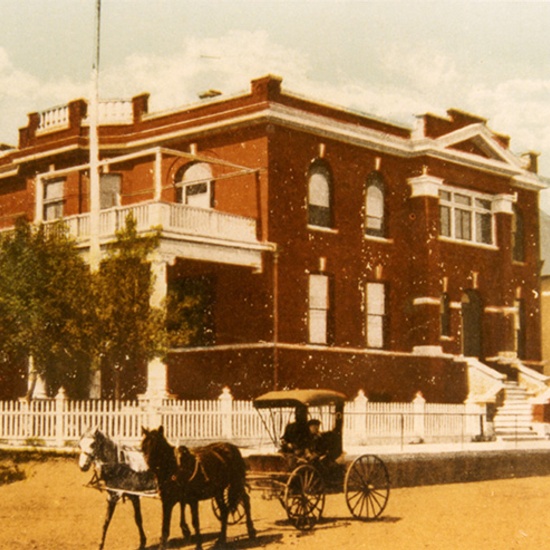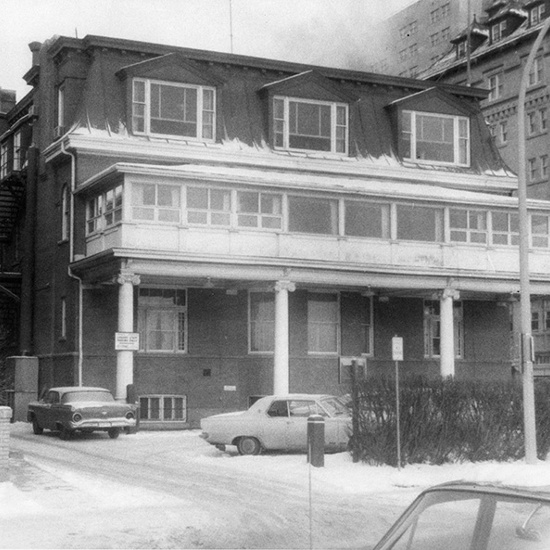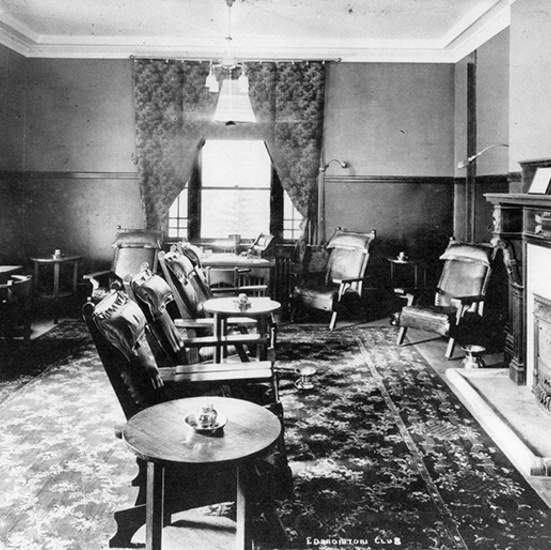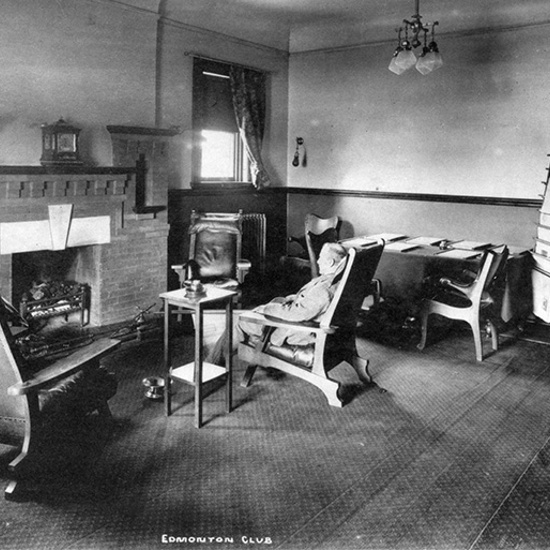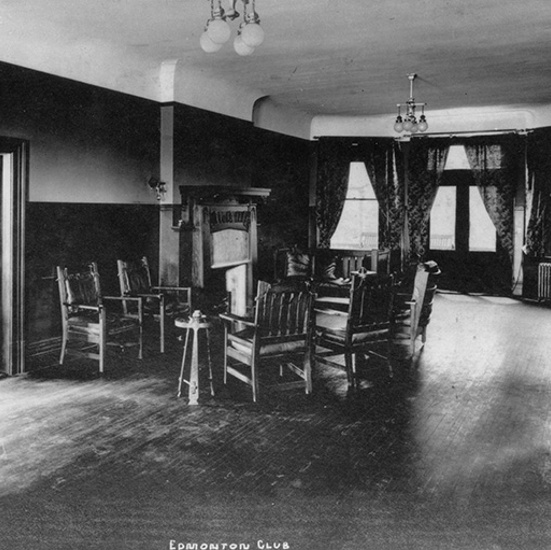Edmonton Club
Edmonton’s oldest men’s club met in this three-storey brick building, once located on College Avenue and McDougall Street overlooking the river valley.
Edmonton’s oldest men’s club met in this three-storey brick building, once located on College Avenue and McDougall Street overlooking the river valley.
In 1899, a few of Edmonton’s prominent businessmen met over a jewelry shop on Jasper Avenue intent on founding the town’s first private club. M.L.A. Matthew McCauley travelled to Regina to ask for federal permission to establish the organization. With royal assent given, the Edmonton club came into being with fifty-six members: mostly businessmen, lawyers, and successful farmers heralding from eastern Canada and Britain. In a ninetieth anniversary commemoration, the Edmonton Report stated that members were required to “have an excellent standing in their field of work, (in other words no blots on their escutcheon).” Over its ninety year existence its members have included Alex Taylor, Bishop H. Allen Gray, Joseph Shoctor, entrepreneurs John A. McDougall, A. Ross McBain, T.W. McBride, Donald Cormie; and politicians Matthew McCauley, Ivor Dent, William Hawrelak, Lawrence Decore, Louis D. Hyndman Sr., J.W. Grant MacEwan, and Peter Lougheed. Wayne Gretzky apparently let his membership lapse because of the dress code enforcing a tie. Other early rules included no whistling, singing, or unseemly demonstrations, no conversation in the library, no tips to the staff, and no dogs. Papers and briefcases were forbidden in the dining room, and no one was allowed to discuss politics, religion, or sex. The entry and annual fees included gourmet luncheons, Friday suppers, private rooms for meetings, and catered private evening events.
The Club first purchased a $3,500 building on Jasper Avenue belonging to the estate of Mary Elizabeth Kernohan. When the pool table they purchased from the Alberta Hotel wouldn’t fit through the doors, they added an annex to this building. In 1903, the Club purchased land from Matt McCauley on College Avenue and McDougall Street and moved the building (without the annex) to what is now 100 Street and 100 Avenue across from the McDonald Hotel. Increased membership necessitated an even larger building within a few years. The red-brick Edwardian structure was constructed for $30,000 and originally stood at two storeys. The first version of this building then had a flat roof with a parapet and corner merlons. The front façade featured a broad columned verandah fully covered by a large balcony and was crowned by a rooftop balcony that projected over a central bay with windows on the first and second stories. At some point before 1960 the balcony was glassed in. A pediment capped the main side entrance where a stone staircase led to an arched doorway. In 1913 the Club, now with 425 members, added a third storey. This level comprised of a Mansard roof with gabled dormers. Inside, members relaxed in a red carpeted library, ate in formal dining lounges, and found entertainment in the billiard room or a soundproof card room. In later decades the Club’s formality relaxed, and in a concession for a “balance between tradition and innovation”, the Edmonton Club finally admitted women in 1986. Over the years the Club experienced its share of financial hardship, but made its way through the steep economic downturn before the First World War, prohibition and, with local economic development and the discovery of oil, was even able to recover its property in 1953 after the City took possession of the clubhouse due to overdue taxes during the Depression. When membership soared in the late 1960s, the sixty-one-year-old building was torn down. The Edmonton Club formally closed in 1994.
Details
Type
Social and Recreational
Designation Status
Demolished
Neighbourhood
Time Period
Year Built
1906-1907
Architects
Architectural Styles
Character Defining Elements
Mansard roof , Voussoirs , Volutes , Rectangular footprint , Pediment , Gable dormer , Keystone , Balcony , Brick structure , String course , Pilaster , Columns , Cornice , Three storeys or more , Stone capital
